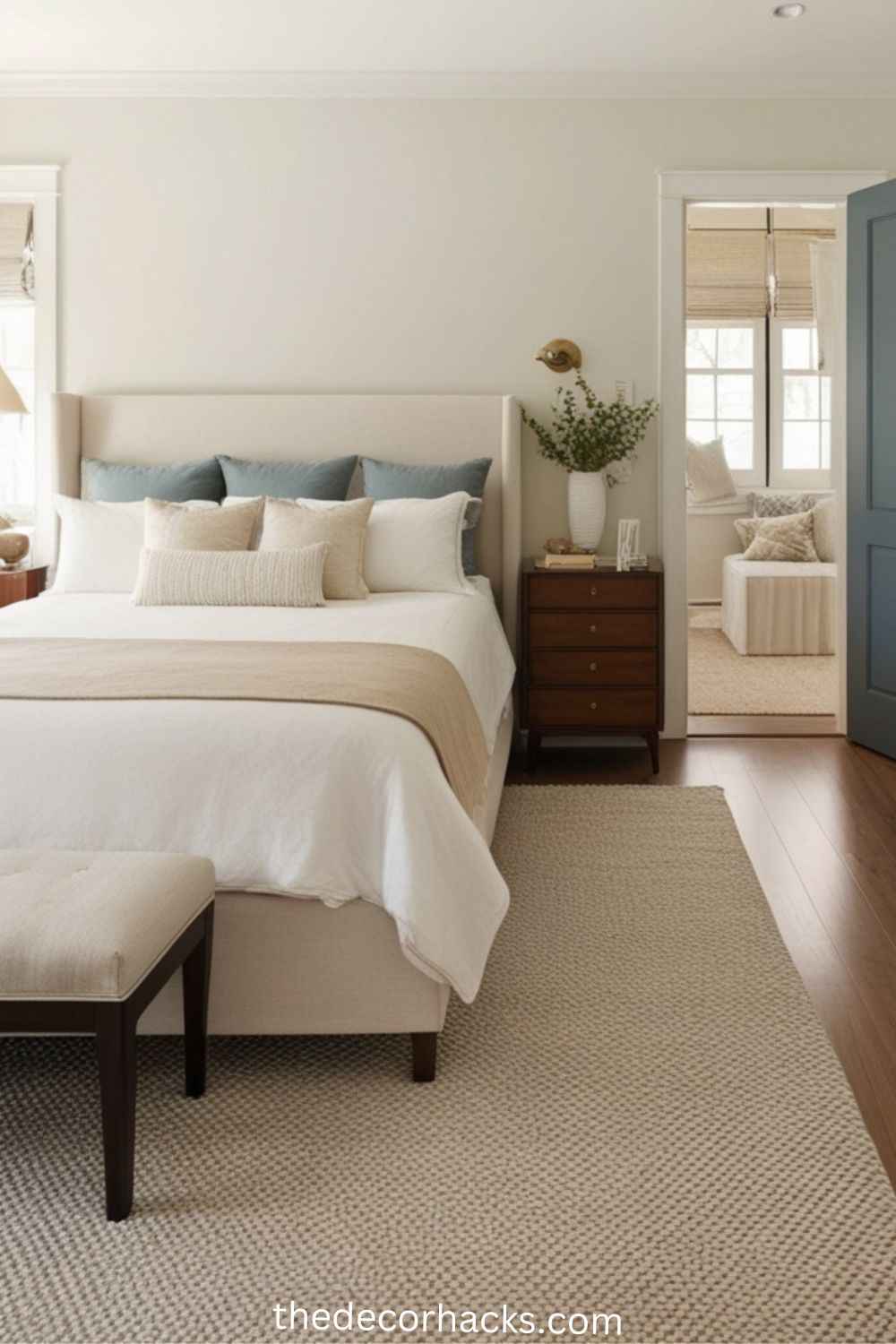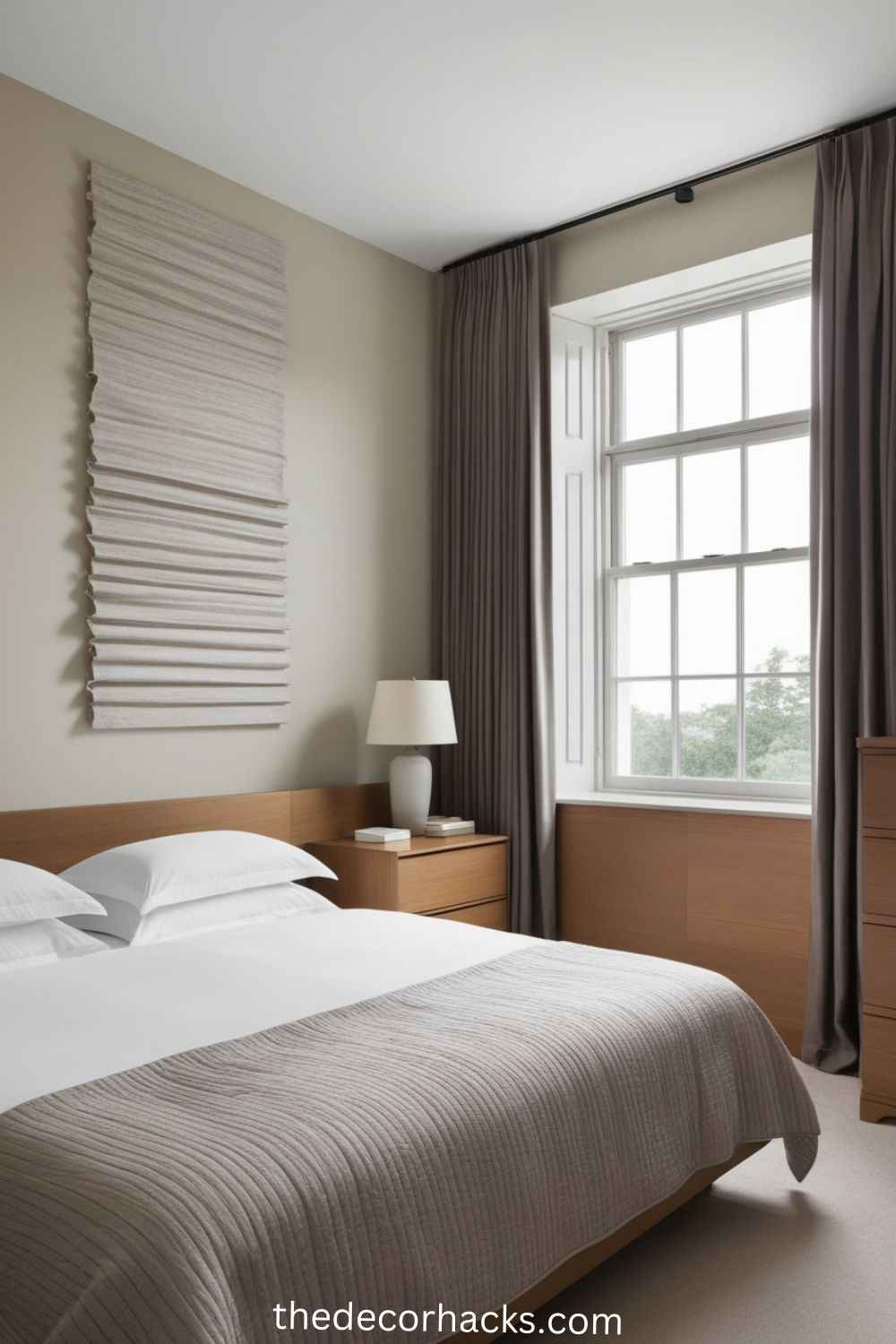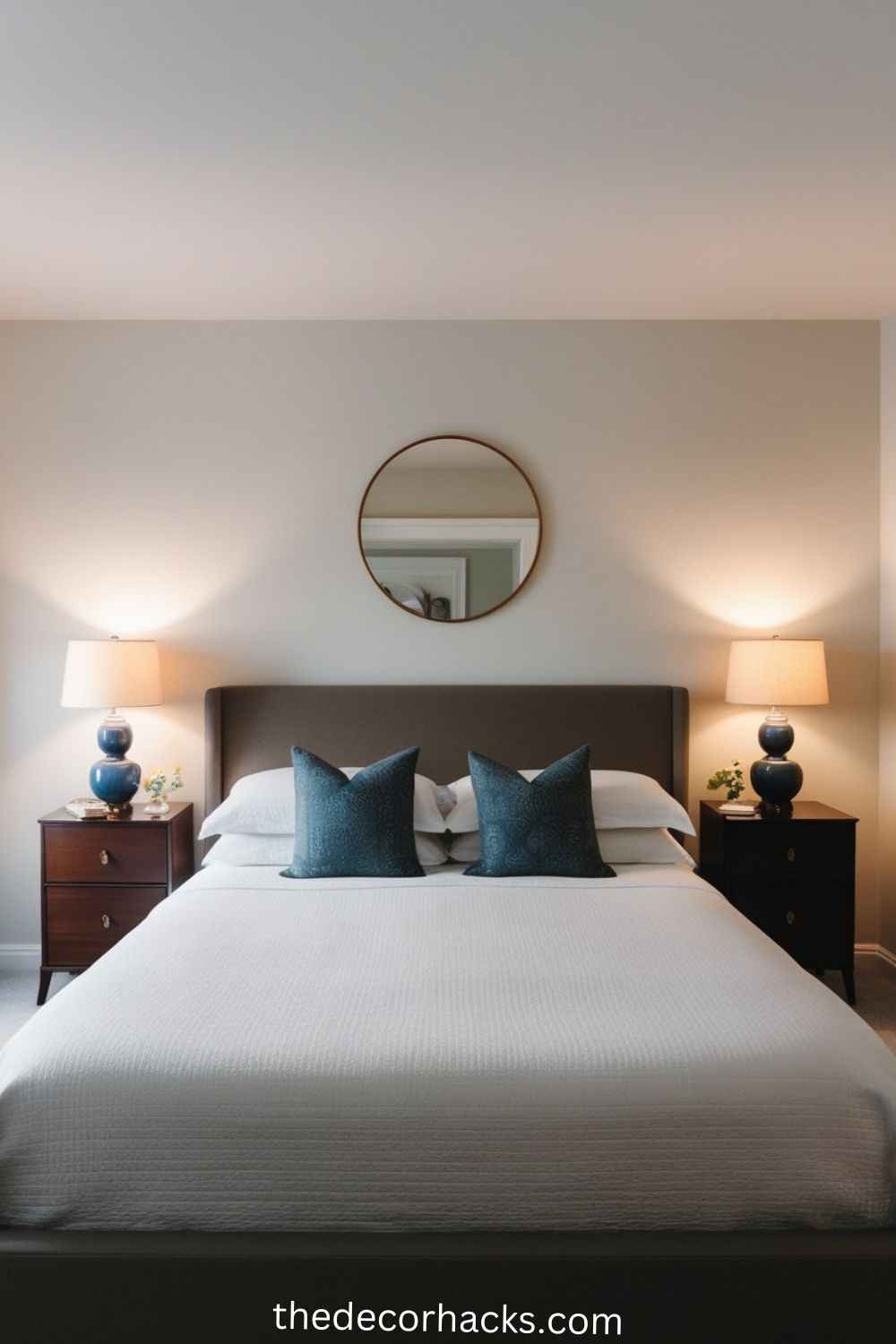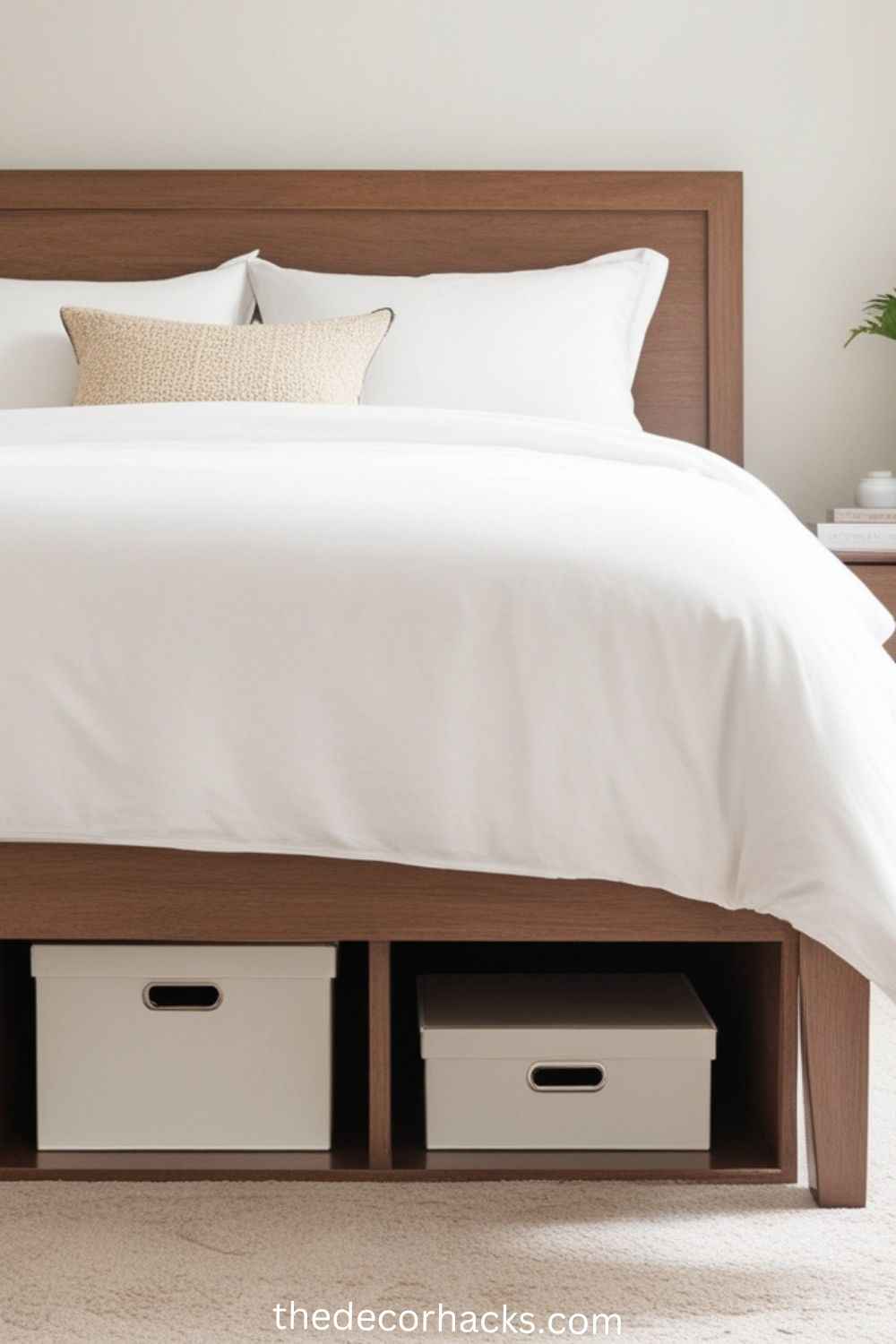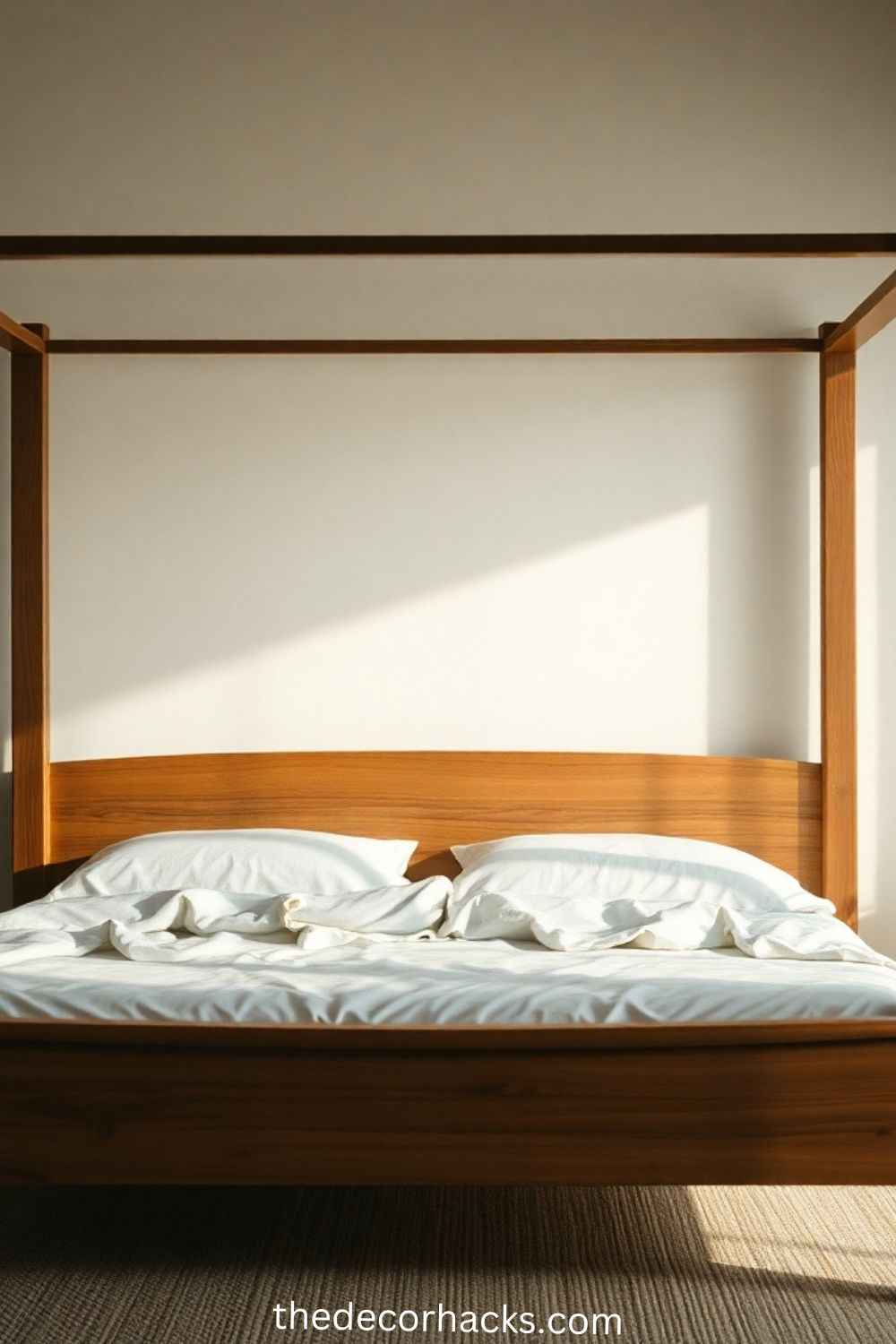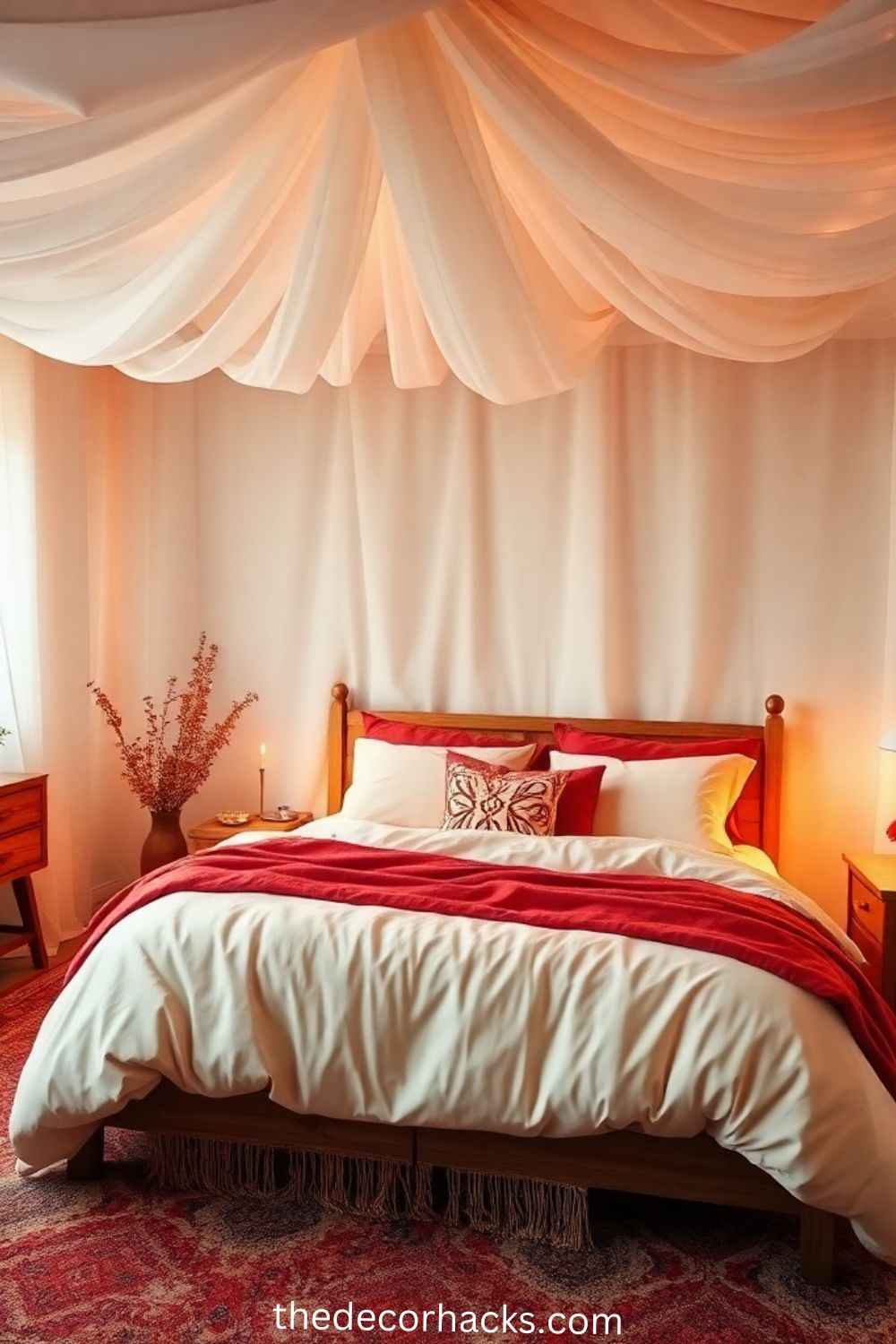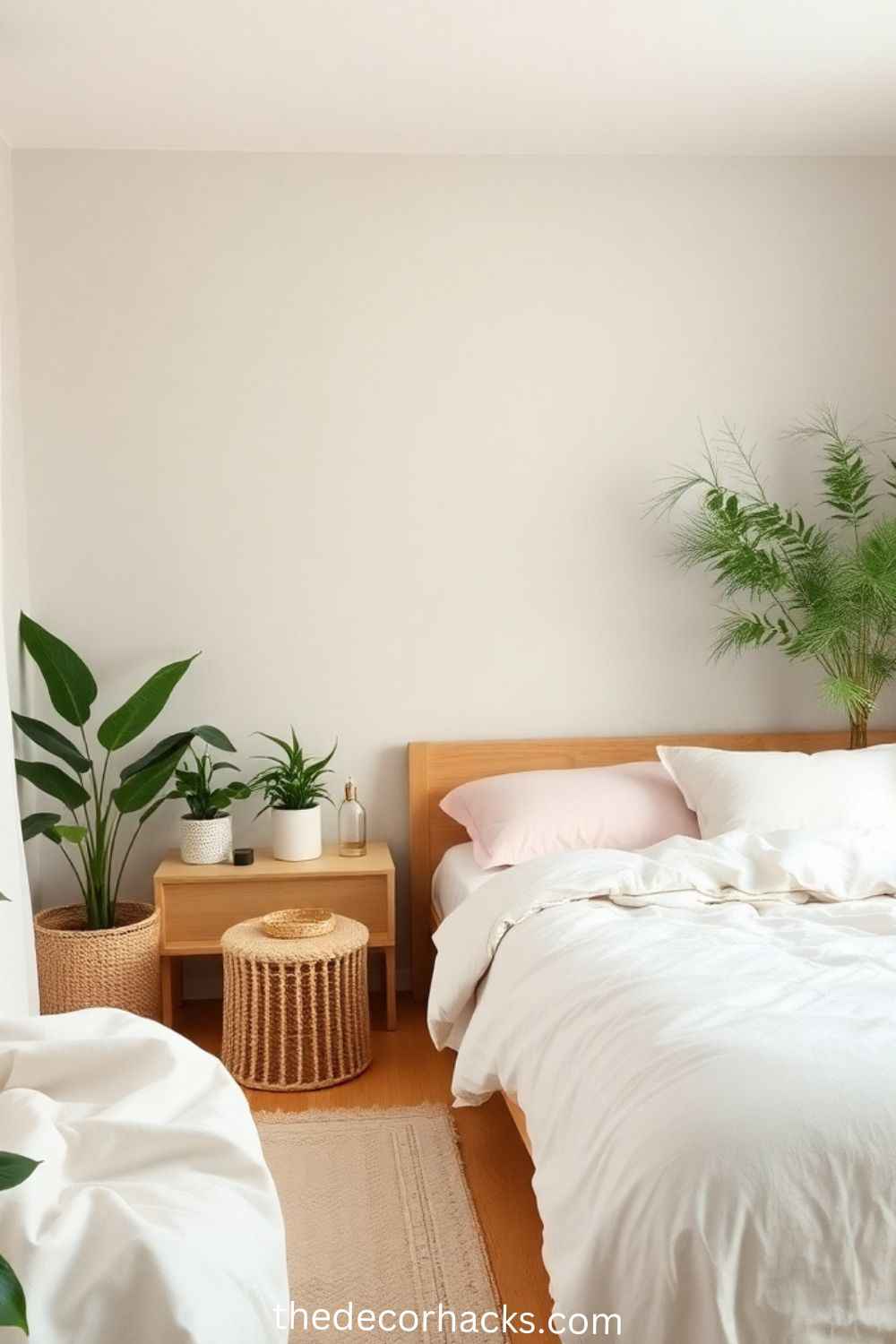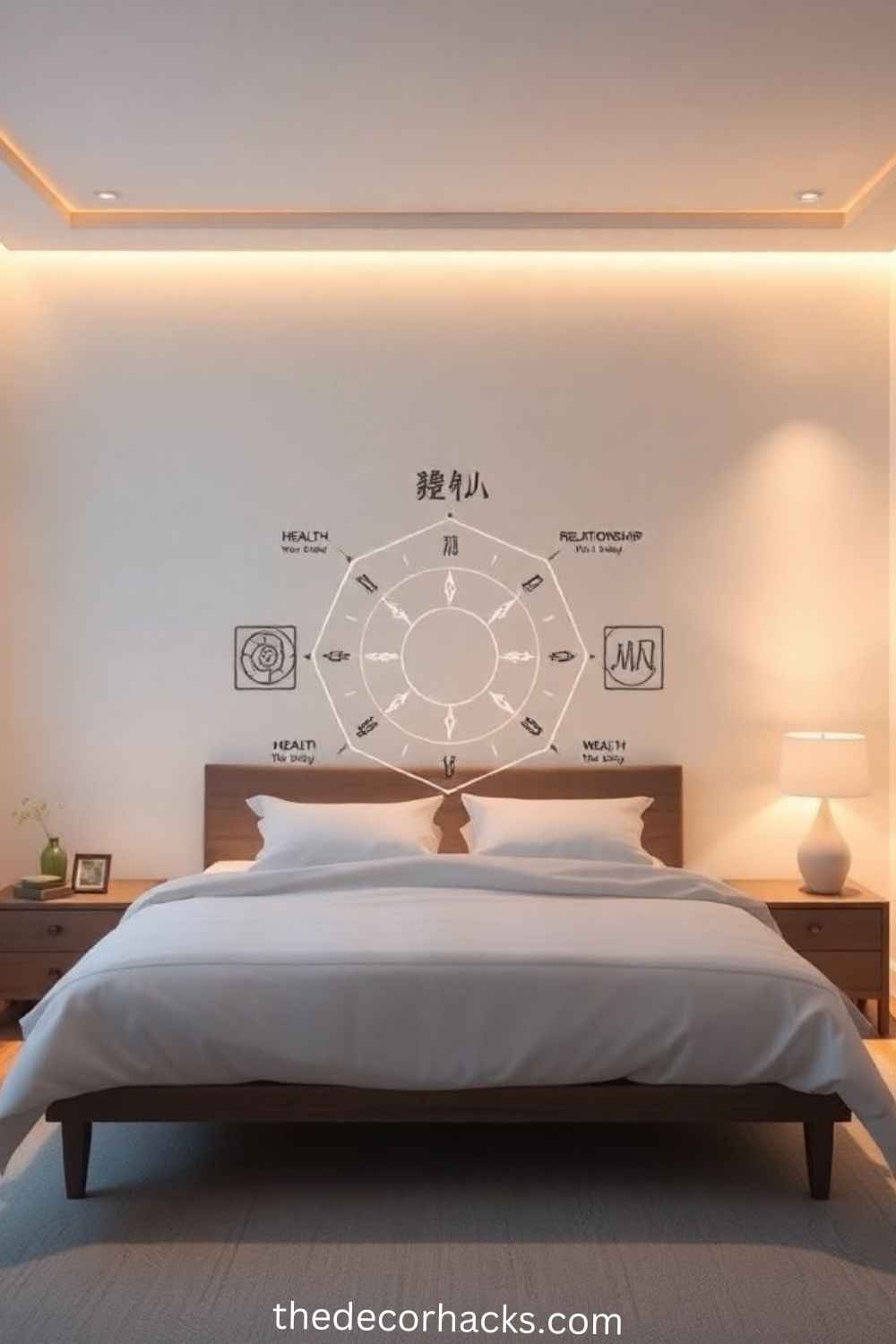Best Feng Shui Bed is an ancient Chinese practice that focuses on creating harmony between individuals and their environment by optimizing the flow of energy, or chi. When it comes to bedroom arrangements, Feng Shui emphasizes the importance of placing your bed in the right position to foster good health, strengthen relationships, and improve overall well-being. The bedroom is considered a sacred space where rest, rejuvenation, and connection occur, making the way you arrange it crucial for balancing energies.
Proper bed placement according to Feng Shui principles ensures the optimal flow of positive energy, which can positively influence your sleep patterns, emotional state, and physical health. By positioning the bed with intention, you can create a restful environment that nurtures and restores. These carefully considered bed arrangements help eliminate disruptive energy, reduce stress, and enhance the quality of your rest. Ultimately, the goal is to align your space to support both personal growth and shared experiences in your relationship, leading to a peaceful, harmonious life.
Best Feng Shui Bed
The Commanding Position
In Feng Shui, the “Commanding Position” is one of the most important bed placement principles. This arrangement involves placing your bed so that it faces the door, but without being directly in line with it. Ideally, the bed should be positioned diagonally across from the door, allowing you to see the entrance without being in the direct path of energy flowing through the door.
This placement is significant for several reasons. First, it promotes a sense of security, as it allows you to see who is entering the room, which can subconsciously reduce feelings of vulnerability. When you are aware of your surroundings, you feel more in control of your environment, which leads to a greater sense of power and stability. This positioning also promotes a better night’s sleep because it ensures that you are not startled or disturbed by the energy from the door, which might cause unease or anxiety.
In addition, the Commanding Position helps to balance the flow of chi, the vital energy in Feng Shui. By creating a more stable, harmonious environment, you enhance your chances of restful, uninterrupted sleep, which is vital for both physical and emotional well-being. This arrangement fosters a sense of calm and balance, encouraging rejuvenating rest and making it an ideal choice for your bedroom layout.
Avoiding Bed Under Windows
In Feng Shui, placing a bed under a window is strongly discouraged, as it disrupts the flow of positive energy and can lead to restless sleep. Windows are sources of external energy, and when the bed is positioned under one, it creates an unstable energy flow, leaving the sleeper feeling vulnerable or unsettled. The external energy from outside, such as traffic noise, weather changes, or even street lights, can negatively impact rest and the overall sense of safety within the room.
Additionally, the window’s energy flow tends to be erratic, unlike the steady flow of energy that should ideally surround the bed. This can result in restless or interrupted sleep, causing you to wake up feeling drained or fatigued. In Feng Shui, a bed under a window is thought to lack the support and grounding necessary for restorative sleep.
To avoid these negative effects, it’s recommended to find an alternative arrangement for your bed. If it’s impossible to move the bed away from the window, consider using heavy curtains or blinds to block out distractions from the outside. Another option is to position the bed against a solid wall, creating a sense of security and stability. If you have limited space, opt for furniture that provides a buffer between the bed and the window, such as a tall headboard or a dresser. These solutions help maintain the flow of positive energy while fostering a restful and balanced sleep environment.
Symmetry in the Bedroom
Symmetry plays a crucial role in Feng Shui, particularly when it comes to bed placement and surrounding furniture. In the bedroom, balance and symmetry are key elements for creating a harmonious environment that promotes relaxation and restful sleep. One of the most important aspects of this symmetry is ensuring that the bed is paired with matching nightstands on either side. This balanced arrangement fosters a sense of equality, stability, and calmness—essential components of a peaceful, rejuvenating space.
Having matching nightstands not only enhances the aesthetic appeal of the room but also helps to regulate the flow of energy. Each side of the bed should be equal in size and style, providing a sense of balance and ensuring that neither partner feels overwhelmed or out of place. This symmetry reflects harmony in relationships, encouraging cooperation and unity between partners. It also promotes a balanced energy flow, helping to reduce stress and tension that could disrupt restful sleep.
Additionally, symmetry helps avoid emotional or physical imbalances, which can manifest as restlessness or discomfort. When everything is in harmony, your body and mind can unwind more easily, allowing you to fully relax and recharge during sleep. In Feng Shui, balanced design is not just about appearance—it’s about creating an environment that supports your well-being in every way.
Positioning for Relationship Harmony
In Feng Shui, the arrangement of the bed is crucial for fostering a harmonious relationship between partners. The goal is to create a space that offers equal energy and space to both individuals, ensuring that both feel supported, valued, and connected. Proper bed placement can significantly impact relationship dynamics, promoting better communication, mutual respect, and emotional intimacy.
To achieve this balance, it’s essential that the bed be positioned centrally in the room, with equal space and energy flow on both sides. Both partners should have their own side of the bed, with matching nightstands to reinforce the idea of equality and shared space. This arrangement symbolizes balance, ensuring that neither partner feels neglected or out of place. The nightstands should be large enough to hold personal items but not so oversized that they crowd the space or disrupt the flow of energy.
Another important factor is the headboard. A solid headboard provides a strong foundation for the relationship, offering both physical and emotional support. If possible, choose a bed with a sturdy, solid headboard that is high enough to provide a sense of security. Additionally, avoid placing the bed directly under a beam or light fixture, as this can create a disruptive energy flow, leading to stress or tension in the relationship.
Lastly, maintaining a clean and clutter-free environment around the bed is essential for nurturing positive energy. Clutter can create emotional blockages and lead to unresolved issues in the relationship. By creating a tidy, balanced space, you invite harmonious energy that supports connection, communication, and emotional well-being in your partnership.
Clear Space Under the Bed
In Feng Shui, the space under the bed is considered an important area that directly affects the flow of energy in the room. Keeping this space clear of clutter is essential for maintaining a harmonious and balanced environment. When the space under the bed is filled with items, especially clutter or disorganized objects, it can create stagnant energy that disrupts the flow of chi. This stagnant energy can lead to restlessness, anxiety, and a lack of restful sleep.
A clear space under the bed allows energy to circulate freely, which supports relaxation, healing, and positive rest. In Feng Shui, a clutter-free bed promotes a restful and rejuvenating sleep, which is crucial for both physical and emotional well-being. Additionally, clutter under the bed can also symbolize emotional baggage or unresolved issues, which could affect the quality of your sleep and relationships.
If you need to use the space for storage, Feng Shui suggests organizing the items neatly in boxes or containers and avoiding storing items that are emotionally charged, such as old memorabilia or broken objects. The key is to keep the area as open and clear as possible to maintain a positive energy flow. If possible, leaving the space completely empty is the most ideal solution, as it ensures that the energy under the bed remains light, fresh, and flowing smoothly throughout the room.
By maintaining a clear space under your bed, you create an environment that encourages peaceful sleep, emotional clarity, and overall well-being.
The Bed and Mirror Rule
In Feng Shui, mirrors in the bedroom are a topic of great significance, as they can greatly affect the energy and sleep quality in the room. According to Feng Shui principles, mirrors should be used with caution in the bedroom, particularly when they are positioned in a way that reflects the bed. A mirror reflecting the bed is considered disruptive because it can double the energy in the room, creating restlessness, confusion, or anxiety, especially while sleeping. This amplified energy can disturb the restful environment needed for deep, rejuvenating sleep.
Mirrors are believed to act as conduits for energy, and when they reflect the bed, they can create an imbalance in the flow of chi. This disruption can lead to disturbed sleep, difficulty falling asleep, or even waking up feeling unsettled. For couples, a mirror reflecting the bed can also create a sense of disconnection or imbalance in the relationship, as the mirror might symbolize a “third” presence in the space, which can negatively affect intimacy.
If you choose to have a mirror in the bedroom, it’s best to position it away from the bed, ideally reflecting something peaceful or harmonious, like a piece of art or a pleasant view. If a mirror cannot be avoided or moved, consider covering it at night with a decorative fabric or mirror cover to prevent it from reflecting the bed. This ensures that the energy in the room remains calm, stable, and conducive to restful sleep.
Ultimately, Feng Shui advises being mindful of how mirrors affect the energy of the space. A well-placed mirror can enhance light and openness, but a mirror reflecting the bed should be avoided to maintain a peaceful, balanced bedroom environment.
The Right Material for Bed Frames
In Feng Shui, the material of your bed frame plays a significant role in determining the energy flow in your bedroom. The right bed frame material can help promote a peaceful, restful environment, while the wrong material can disrupt the flow of chi and potentially affect your sleep and overall well-being. Different materials carry distinct energy qualities, and it’s important to choose one that aligns with the desired energy of your sleep space.
Wood is considered the ideal material for a bed frame in Feng Shui because it is naturally grounding and nurturing. Wood is associated with the Earth element, which fosters stability, growth, and a calm environment. A wooden bed frame provides a sense of support and comfort, encouraging restful sleep and emotional healing. It’s especially beneficial for those seeking to enhance relationships or add warmth and security to their bedroom.
On the other hand, metal bed frames, though stylish and modern, are generally not recommended in Feng Shui, especially if they are placed in the center of the room. Metal is linked to the Metal element, which can create a more active and stimulating energy. In the bedroom, this can potentially lead to restlessness, difficulty relaxing, or even disturbed sleep. However, if you choose a metal frame, it’s best to pair it with softer, more nurturing elements like fabrics and textiles to balance out the energy.
When selecting a bed frame material, it’s important to consider comfort and energy flow. Soft materials such as upholstered frames or those made of natural fabrics are also good choices, as they enhance the room’s overall sense of comfort and tranquility. The key is to create a space that feels cozy, stable, and supportive, with materials that align with the calm, restorative energy you wish to cultivate in your bedroom.
Balancing Earth and Fire Elements
In Feng Shui, creating a harmonious balance between the Earth and Fire elements in the bedroom can significantly enhance the energy flow, contributing to a peaceful, nurturing, and revitalizing environment. The Earth element represents stability, grounding, and nourishment, while the Fire element symbolizes passion, energy, and warmth. By incorporating both elements in the right proportions, you can create a bedroom that fosters both restful energy and emotional vitality.
To balance these elements, start with the Earth element, which can be introduced through natural materials like stone, ceramics, wood, and earthy colors. For bedding, opt for warm, earthy tones such as beige, terracotta, soft browns, or muted greens. These colors promote relaxation, grounding, and stability, ensuring a calming atmosphere for restful sleep. Bedding made from natural fibers like cotton or linen further enhances the Earth element, bringing in a sense of comfort and connection to nature.
The Fire element can be incorporated with vibrant, energizing colors like red, orange, or shades of pink, which evoke passion, warmth, and vitality. These colors can be added as accent pieces—such as throw pillows, blankets, or wall decor—to bring the Fire element into the space without overwhelming it. Lighting is another key aspect of the Fire element. Soft, warm lighting, such as table lamps with a warm glow, can energize the room while maintaining a cozy atmosphere.
For surrounding furniture, choose pieces that offer a balance between both elements. Wooden furniture, such as a wooden nightstand or dresser, supports the Earth element, while metallic or glass elements can introduce subtle touches of the Fire element. However, be careful not to overdo it with too much Fire energy, as it can make the space feel overly stimulating. Instead, find a balance by using these elements sparingly and harmoniously.
By carefully integrating the Earth and Fire elements, you can create a bedroom that feels both nurturing and invigorating, offering a space of restful sleep, passion, and emotional well-being.

Hi! I’m Meg Yoder, a Pennsylvania-based designer with a passion for brand development and home decor design. Creativity has always been my driving force, whether I’m crafting a cohesive brand identity or reimagining a living space with unique decor hacks.
I created TheDecorHacks.com as a space to share my favorite design ideas, tips, and inspirations. From DIY projects to expert insights, my goal is to help you transform your spaces into something extraordinary—without breaking the bank.
When I’m not busy designing, you can find me exploring vintage markets, experimenting with color palettes, or sipping coffee while sketching my next big idea. Let’s create something beautiful together!
![The Decor Hacks [Trending Decor Design Ideas]](https://thedecorhacks.com/wordpress/wp-content/uploads/2025/01/cropped-the-decor-hacks.png)

